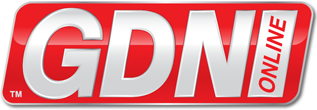The GCC’s Islamic finance industry is set for robust, resilient growth, with total assets projected to expand at a rate of approximately 10 per cent through 2026, driven primarily by ambitious state-backed economic diversification programmes.
S&P Global’s 2026 edition of its annual Islamic finance outlook confirms that while the sector is underpinned by strong fundamentals, it faces structural challenges, notably concerning the future of the sukuk market.
The primary catalyst for this expansion is the immense capital expenditure required for projects like Saudi Vision 2030 and regional net zero strategies. Islamic banks are perfectly positioned to capture a large share of this sovereign-driven credit demand for infrastructure, real estate, and private-sector development.
Industry stability is further reinforced by a combination of banking strength and liquidity flow. GCC Islamic banks generally maintain robust capital buffers and strong asset quality indicators, which is crucial as it enables them to expand their lending books in support of regional development without incurring major macroeconomic imbalances. This strong position is complemented by sustained high oil prices, which continue to channel significant government revenues and liquidity directly into the financial system, consequently supporting Sharia-compliant investments and projects across the GCC.
In the report’s foreword, Dr Mohamed Damak, managing director and global head of Islamic finance at S&P Global, said: “The industry’s resilient growth is expected to persist through 2026, primarily driven by Saudi Arabia’s economic transformation and strong core GCC economies. Growth remains heavily concentrated, with the GCC accounting for more than 80 per cent of banking asset growth in 2024.”
Dr Damak highlighted the sector’s imperative to evolve: “The industry must improve its value proposition for efficiency... Future growth will be increasingly driven by the link to the real economy, natural alignment with sustainability, and the acceleration of sustainable sukuk issuance and digitalisation.”
The global sukuk market – with outstanding issuance surpassing the $1 trillion milestone in 2024 – remains heavily reliant on the GCC as a core source.
Dr Damak confirmed this trend, stating that “The sukuk market is expanding, with foreign currency issuances up to $41.4 billion in H1 2025, supported by high financing needs despite global volatility.”
Sovereigns, alongside major entities like Saudi Arabia’s Public Investment Fund (PIF), are using sukuk to diversify funding away from conventional debt for large ‘Vision’ projects.
A significant new driver is the surge in sustainable and green sukuk, allowing GCC issuers to align with national ESG goals and tap into a fast-growing pool of ethical international investors.
However, the capital market faces a structural headwind from the impending adoption of the AAOIFI Standard 62 (Financial Assets). If strictly implemented, it could potentially reclassify certain sukuk instruments, potentially raising issuance costs and increasing market fragmentation. Dr Damak addressed this, noting that the proposed standard “is being reopened for market comment due to concerns over its shift towards equity-like instruments.”
Bahrain, a pioneer of modern Islamic finance, is maintaining its status as a crucial regulatory and innovation hub.
The kingdom hosts the Accounting and Auditing Organisation for Islamic Financial Institutions (AAOIFI), granting it an outsized influence over global Sharia compliance and sukuk standards. This commitment to standardisation cements Bahrain’s role as the intellectual capital of the industry.
Furthermore, the domestic economy provides a stable foundation, with Bahrain’s non-oil GDP forecast to maintain strong momentum (projected at approximately 3.0-3.6pc in 2025-2026). This non-oil growth supports local credit demand and capital market activity, reinforcing the kingdom’s mature regulatory environment for developing Takaful (Islamic insurance) and debt products.
avinash@gdnmedia.bh

&uuid=(email))